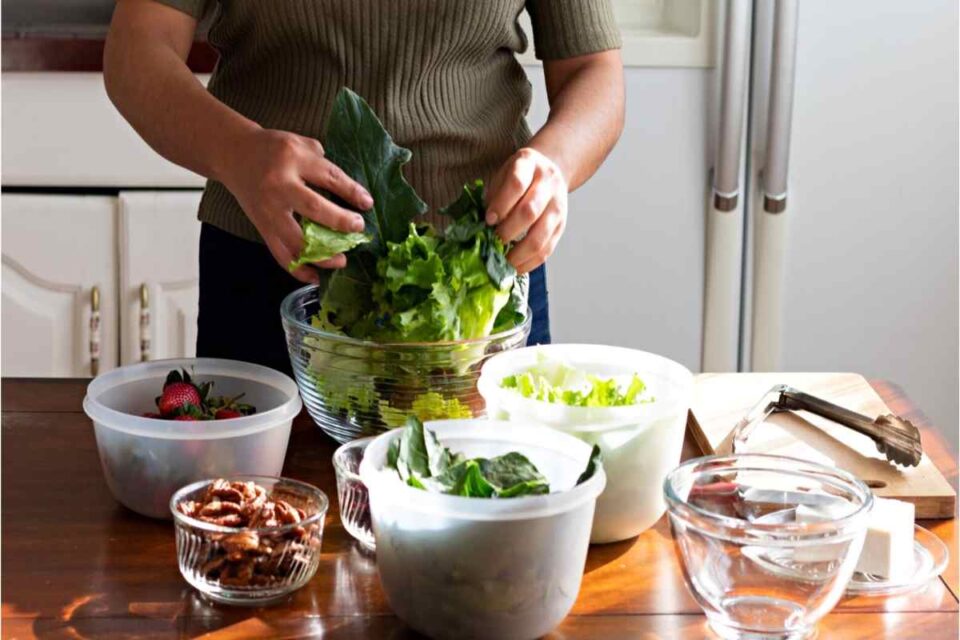Eating healthy is a catch-22. You want wholesome foods without a huge bill, and you also need convenience. Spending hours on meal prep isn’t quick or affordable if it eats into your free time.
And fast food, while there may be healthier options, is neither budget-friendly nor healthy long-term. Nearly everyone knows portion sizes are too big, there’s no control over the ingredients, and prices are high. But a walk down a grocery store aisle, although more affordable, can bring sticker shock. Food prices have risen substantially since 2020, and they are projected to continue increasing.
So, what’s the solution for people like yourself who want to eat healthy foods while sticking to a budget? Contrary to what many believe, eating well doesn’t always come with a huge price tag. There are several ways you can buy nutrient-dense meals without spending more than you can afford. Yep, even in 2025.
Table of Contents
Look Outside the Grocery Store
Grocery stores are the go-to places for just about everything. You can stock your pantry, fridge, and freezer in one trip. Some chain stores are open 24/7, making those last-minute runs for the forgotten holiday yams and eggnog possible.
But how many times have you found yourself throwing out spoiled or expired food? One of the problems with having so many choices is that you sometimes buy too much. Not to mention, there’s temptation around every corner. Sale items on display and munchies near the checkout counter end up in the cart. You might stay in budget, but you’re not always sticking to your diet or avoiding waste.
Sourcing your meals from places besides the supermarket can help keep you on track. Think about farmers’ markets, healthy meal kits, and community food swaps. Meal kits, especially, provide you with the exact portions you need throughout the week. You’re not going to end up with a bunch of leftovers and extra ingredients. You can personalize and plan the food you get so you don’t stray from your nutrition or financial goals.
Consider Alternatives to Fresh Produce
Buying fresh produce when it’s in season can be cost-effective. Summer is the best time to find lower prices on blueberries, raspberries, and green beans. October is a ripe month for veggies like eggplant and cucumbers. Despite seasonal dips in price, fresh produce isn’t always the most budget-friendly.
First, fresh produce needs to be eaten quickly. Otherwise, it will spoil within a week, sometimes less. For singles, eating all your fresh produce before it goes bad can be a challenge. It ends up costing you more in waste if you can’t get to every tomato and green pepper in time.
It’s why choosing frozen and canned alternatives is often a better option for penny pinchers. You don’t lose out on nutritional value. The fruits and veggies keep longer, allowing you to incorporate them into meals at a slower pace. You can also watch for year-round sales, since availability isn’t always restricted to seasons. Depending on your dietary needs, you may want to stick to low-sodium or low/no sugar choices for canned versions.
Choose Store Brands
Buying brand-name foods can feel like you’re getting the best of the bunch. However, you’re paying dearly for the name. Brand-name manufacturers often package the same items under different labels, including store brands. By choosing store-brand marinara sauce over the leading household name, the only thing you’re losing is the price.
Store brands can save you as much as 40% at the checkout stand. Most, if not all, major grocery chains have them. From seasonings to frozen dinners, you’ll find store brands in nearly every aisle. For loyalty members, chains also offer personalized and weekly discounts on store-brand items.
Adding a store brand granola to your basket every week? Chances are, you’ll find a special discount on it in the store’s app periodically. Some chains also allow you to participate in healthy challenges, such as increasing your physical activity for a month. Meet the goal and you’ll get a bunch of points. You can then redeem those points for free or heavily discounted healthy items like organic salads and bottled water.
Try Meatless Protein
No doubt about it. Your body needs daily protein. But there are alternatives to grilled chicken and a juicy hamburger. Going meatless a few times a week can save you from sticker shock when you look at your receipt.
Beans, whole grains, and nuts are good sources of protein. Greek yogurts, cottage cheese, and egg whites are other meatless alternatives. What’s advantageous about beans, whole grains, and nuts is that you can buy them in bulk. Bags of lentils and rice can be stored for months while you use them in salads or soups. Oats are whole grains you can keep in the pantry to make oatmeal in the mornings.
The possibilities expand when you consider making simple meals from scratch you can eat at different times. You can whip up a rice and bean salad as a lunch, dinner, or side. Making your own soups with beans, broth, rice, and vegetables means you’ll avoid over-processed varieties. These dishes are also easy to cook in batches, so you can freeze some for later. Other ideas include bean and rice burritos with whole-grain tortilla wraps.
Eating Healthy on a Budget
You don’t have to compromise your budget to eat healthy, wholesome foods. Although some people believe it’s more expensive to buy nutritious meals, this belief is a misconception. Higher-priced organic grocery stores and fast-food chains promoting “healthier” items are partially to blame.
Shifting your mindset to alternatives beyond traditional grocery stores, fresh produce, name brands, and meat-based proteins increases affordability. Planning your meals while choosing versatile ingredients you can use multiple times also helps. Consider nutrient-dense items you can store longer, buy in bulk, and make several meals from. And if all this seems too overwhelming, healthy meal kit delivery options can accomplish everything at once.

